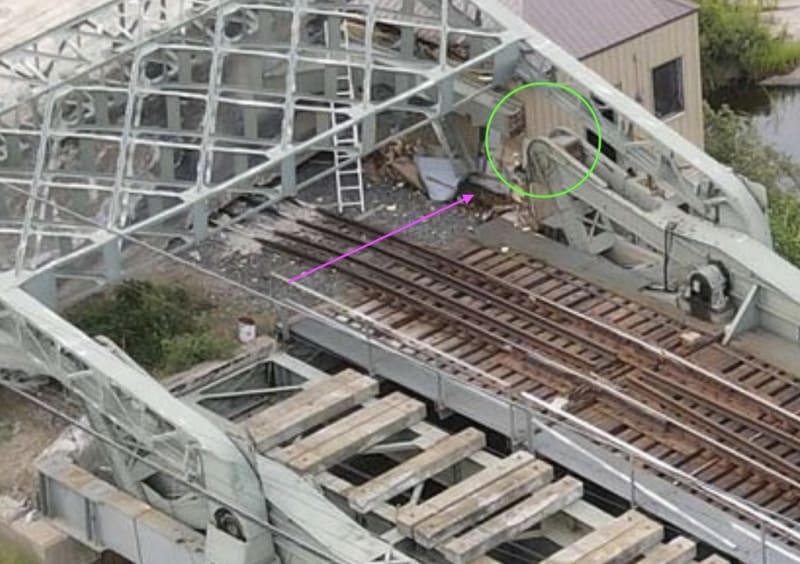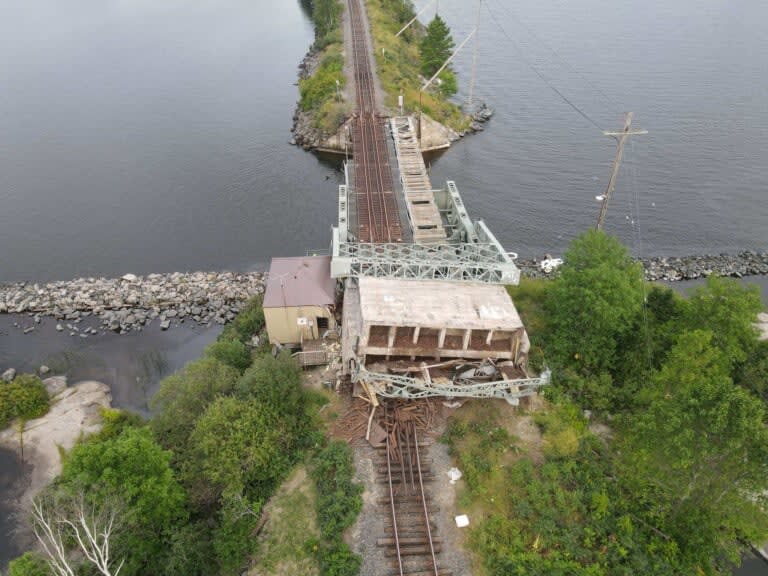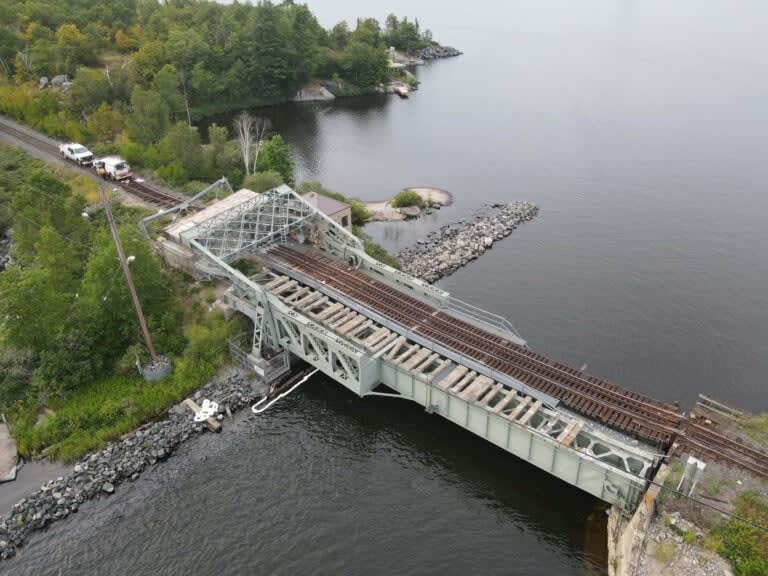TORCHMAN
Structural
- Sep 8, 2023
- 70
Anyone has more info on this bridge collapse? Did it collapse while lifting? Any info is appreciated.
Follow along with the video below to see how to install our site as a web app on your home screen.
Note: This feature may not be available in some browsers.



Rail bridge to resume service by mid-September
Oops409 said:Temporary Quick Bandaid Fix to get trains running by mid Sept 2024. Wonder if they are going to just weld on some shims and cross beams to the bent bridge to provide level platform for new track, and use existing bent, buckled bridge substructure, as is, in a fixed configuration?
Edit: the audio version confirms use of existing substructure as fixed temporary bridge. I imagine they will build the new bridge beside this bridge, and shift tracks to it when it is complete. Therefore likely the land owners without roads to their properties are going to be without boat access either for an extended period of time.
